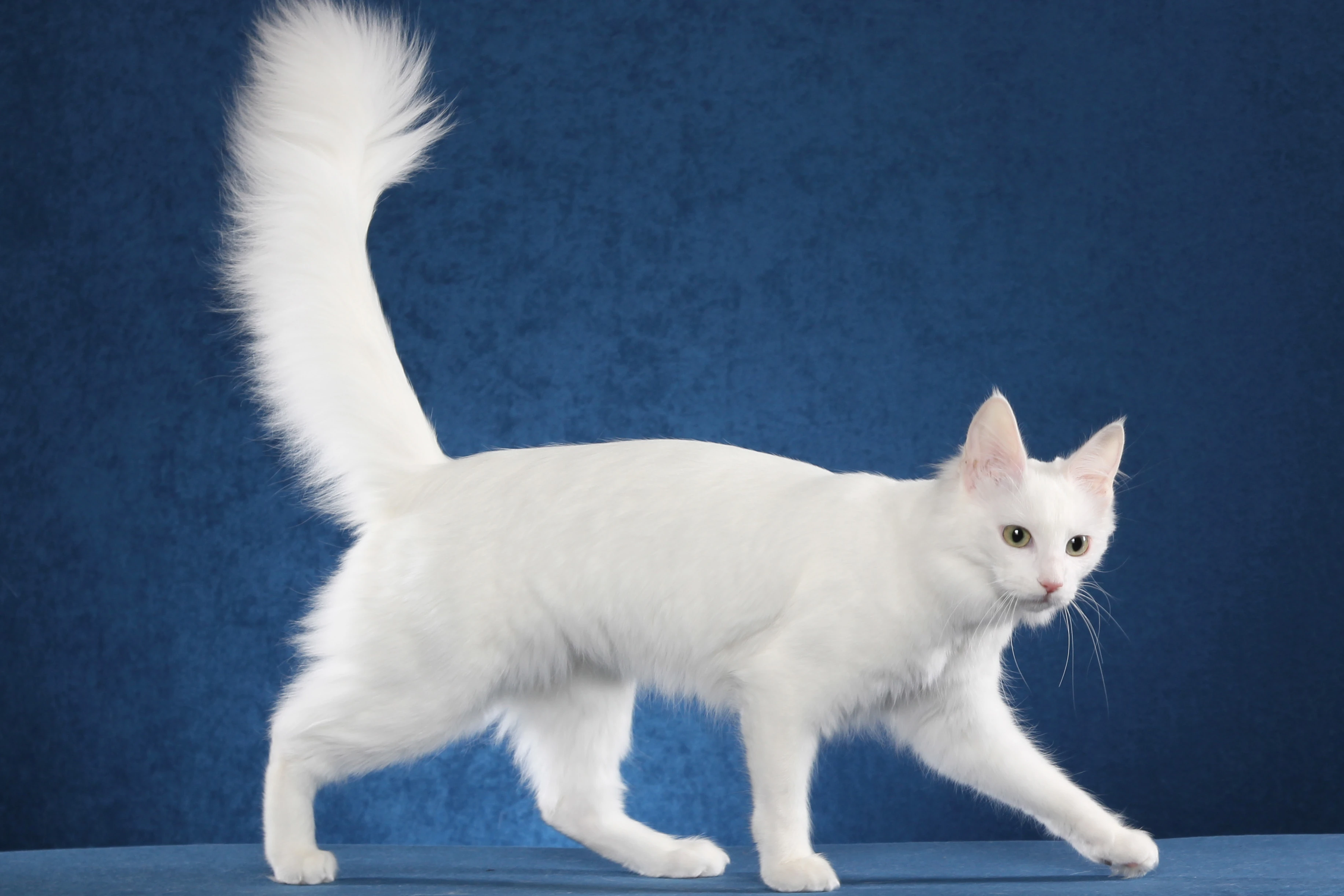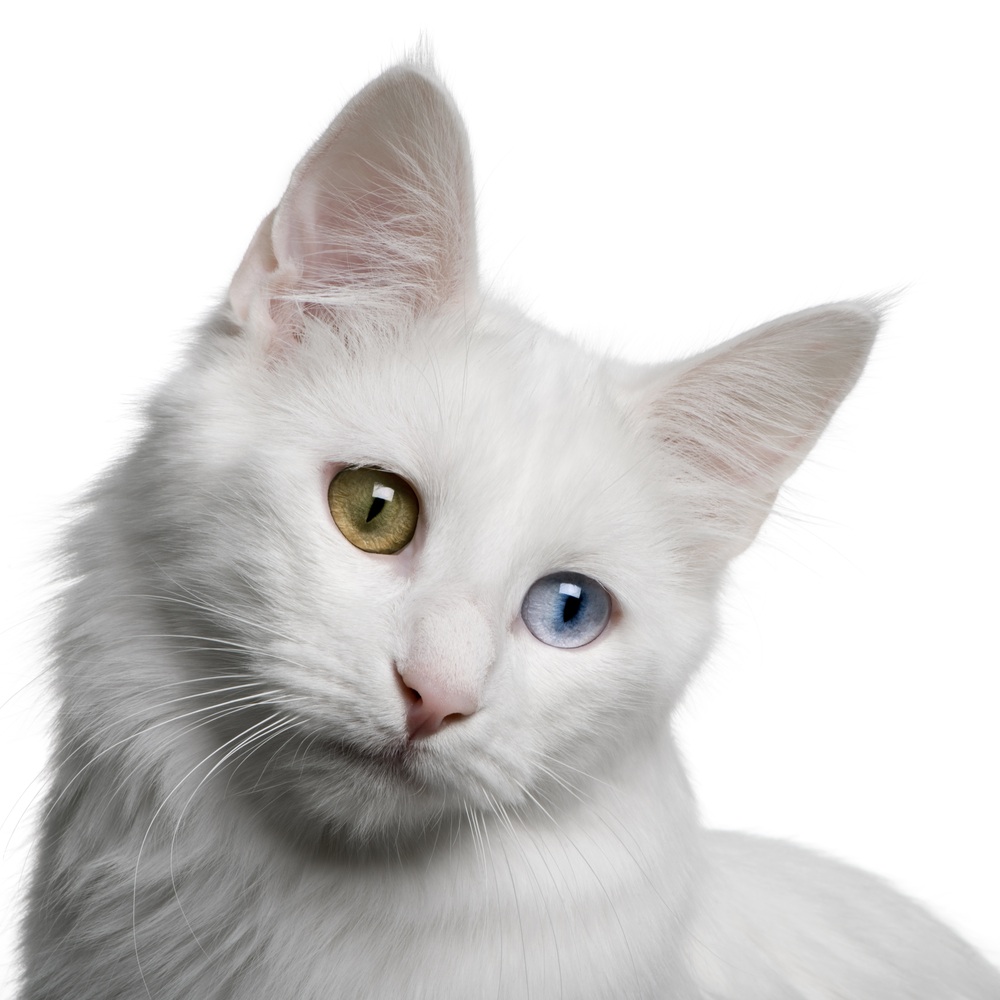 Elegant Turkish Angoras are graceful, energetic and usually the first to welcome visitors into your home. At one point all longhaired cats were called Angoras due to the Angora thought to be the source of the long fur gene.
Elegant Turkish Angoras are graceful, energetic and usually the first to welcome visitors into your home. At one point all longhaired cats were called Angoras due to the Angora thought to be the source of the long fur gene.History
Turkish Angoras are one of the ancient, natural breeds of cat, having thought to have originated in central Turkey, in the Ankara region (historically known as Angora). Cats from eastern mountainous regions of early Anatolia and through inbreeding and natural selection, developed into longhaired breeds like the Turkish Van and the Turkish Angora.
Longhaired cats were imported to Britain and France as early as the late 16th century. There the Turkish Angora was used, almost to the point of extinction, to improve the coat on the Persian. The Angora of the 20th century was used for improvement in the Persian coat, but the type has always been divergent from the Persian – particularly as the increasingly flat-faced show cat Persian has been developed in the last few decades.
Appearance
Turkish Angora cats have long, silky coats and elegant, sinuous bodies. Though it is best known for a shimmery white coat, Turkish angora cats can display a variety of colors: solid colors, such as black, blue, red and cream; in tortoiseshell or blue-cream; in classic, mackerel and spotted tabbies of many colors; and bi-colored cats in any of these colors with white. In recent years, many breeders have begun working with smoke and shaded colors as well. Any shade and pattern, except those that denote hybridization (such as lavender, chocolate or the pointed pattern) is accepted for CFA registration.
The W gene responsible for the white coat and blue eye is closely related to the hearing ability, in this and other breeds, and presence of a blue eye can indicate the cat is deaf to the side the blue eye is located, with some being totally deaf if bearing two blue eyes. However, a great many blue and odd-eyed white cats have normal hearing, and even deaf cats lead a normal life if kept indoors.
Personality
Turkish Angora cats are playful, intelligent, athletic and involved. They bond with humans, but often select a particular member of the family to be their constant companion. They are in turn, very protective of their person.
Turkish angoras are energetic, and often seek out "high ground" (or perch) in the home. This perch is then used as a way to observe activity of the home. This could include tops of doors, bookshelves, and other furniture. Some ride on their owners' shoulders.





Nice Post...
ReplyDeleteI'm having very interesting information regarding Sphynx Kittens for Sale and Available Cats for Sale